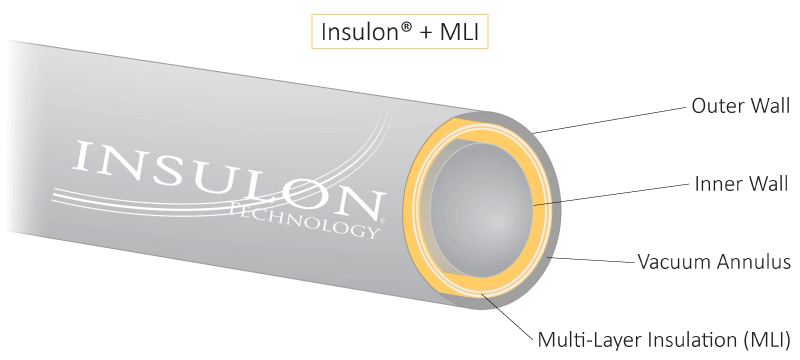If you’re looking for high-performance thermal insulation, you’re probably comparing a few different options to figure out what product is right for your application. You might be concerned about operating temperature range, space consumption, compression resistance, or durability. But likely, the most critical factor you’re considering is performance.
How is thermal performance measured?
Engineers use measurements such as R-values, U-values, K-values, and C-values to describe insulation performance. All of these measurements quantify performance, but they do so in slightly different ways. When conducting measurements, it’s important to choose the most appropriate metrics for the material, system, or application at hand.
R-value
R-value represents thermal resistance
U-value
U-value represents thermal transmittance
K-value
K-value represents thermal conductivity
C-value
C-value represents thermal conductance
Thin insulation with a high R-value
One common question is, What is the thinnest insulation material with the highest R-value (or lowest K-value)? Answering this question can be very informative; however, R-values, which represent thermal resistance, are most useful when measuring homogeneous materials such as panels or sheets of mineral wool, fiberglass, pyrogel, or aerogel.
Why doesn’t vacuum insulation have a static R-value or K-value?
Unlike other materials, vacuum insulation doesn’t have a static measurement of thermal resistance. Engineers design vacuum insulation in many different shapes and sizes; the geometric design influences the performance, which means the resistance varies. There is no “one size fits all” R-value or K-value for vacuum insulation.


For example, the two vacuum insulated tubes above have identical measurements for inner diameter, outer diameter, and overall wall thickness, but the one on the left is longer. With all other factors being equal, the tube with greater length will deliver higher performance.
Measuring vacuum insulation performance with U-values
For cylindrical, elliptical, or custom vacuum insulation, U-values are much more meaningful than R-values and K-values. U-values are overall heat transfer coefficients that describe the performance of a system as opposed to a homogeneous material. When conducting performance analyses, our engineers most often rely on thermal transmittance to evaluate the performance of a vacuum insulated tube, pipe, hose, canister, flask, container, or custom design.
“U-value, known officially as thermal transmittance… is more of an engineering term used to designate the thermal performance of a system as opposed to a homogeneous material.”
– Insulation Outlook
Engineering vacuum insulation performance
Despite not having a static measurement for thermal resistance, vacuum insulation can deliver some of the best performance available – especially when combined with MLI installed in the vacuum annulus. It can even provide an alternative to aerogel.
It can be challenging to compare vacuum insulation to other materials that have static R-values readily available. But in many ways, and this is a positive – engineers can use this performance variability to your benefit. Engineers can adjust various parameters (length, inner diameter, outer diameter, material selection) to customize the performance to suit your application.
Learn more about engineering vacuum insulation →




